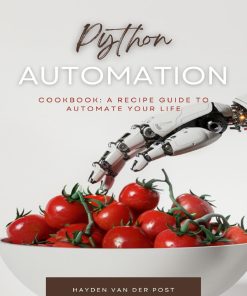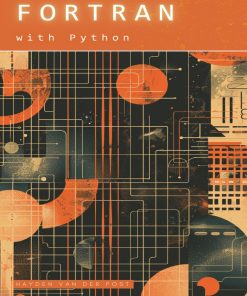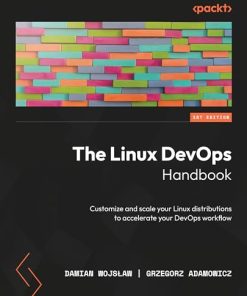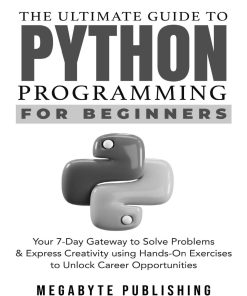Hands On Python for DevOps Leverage Python’s native libraries to streamline your workflow and save time with automation 1st edition by Ankur Roy 1835081495 9781835081495
$50.00 Original price was: $50.00.$25.00Current price is: $25.00.
Hands-On Python for DevOps: Leverage Python’s native libraries to streamline your workflow and save time with automation 1st edition by Ankur Roy – Ebook PDF Instant Download/DeliveryISBN: 1835081495, 9781835081495
Full download Hands-On Python for DevOps: Leverage Python’s native libraries to streamline your workflow and save time with automation 1st edition after payment.
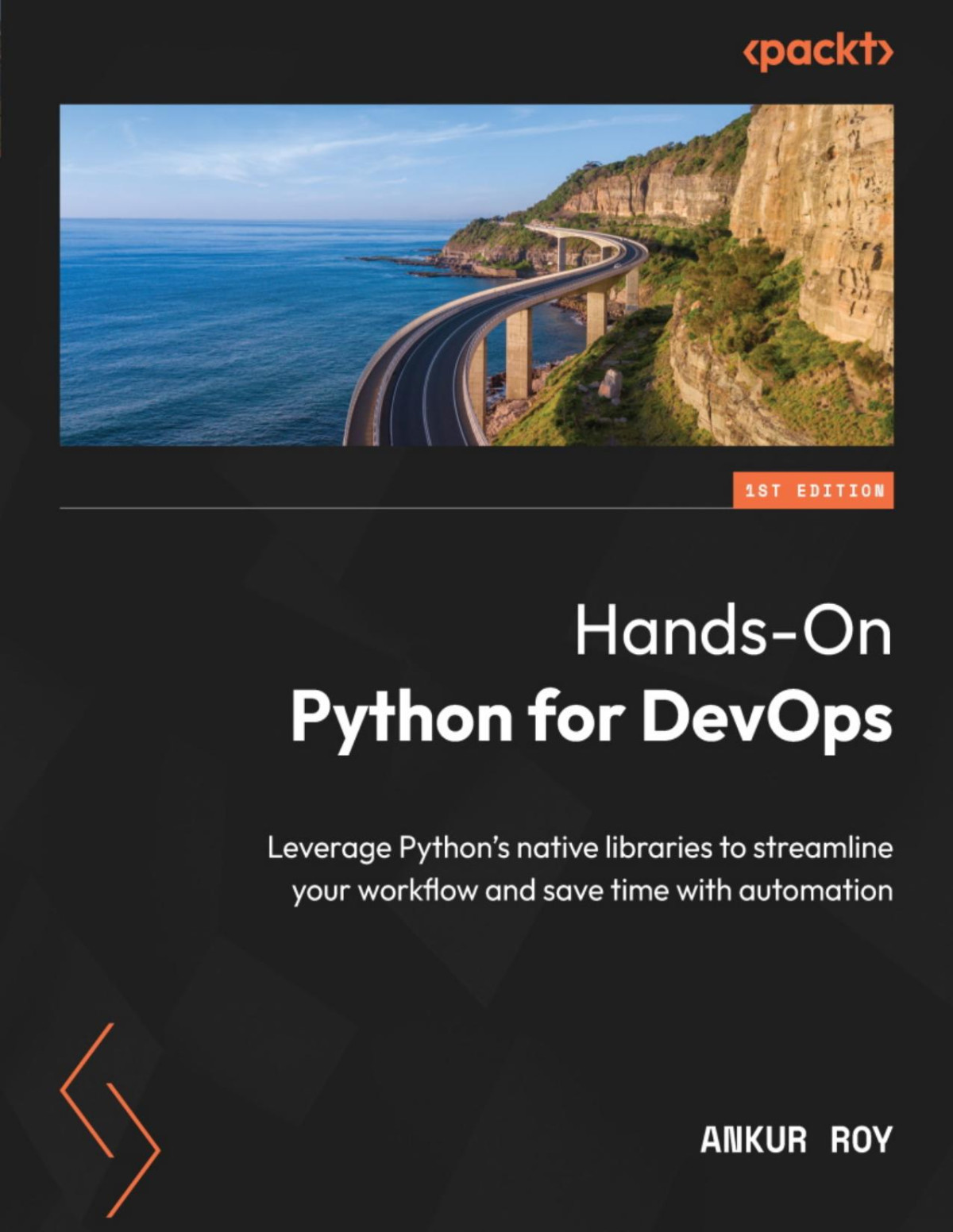
Product details:
ISBN-10 : 1835081495
ISBN-13 : 9781835081495
Author: Ankur Roy
Python stands out as a powerhouse in DevOps, boasting unparalleled libraries and support, which makes it the preferred programming language for problem solvers worldwide. This book will help you understand the true flexibility of Python, demonstrating how it can be integrated into incredibly useful DevOps workflows and workloads, through practical examples. You’ll start by understanding the symbiotic relation between Python and DevOps philosophies and then explore the applications of Python for provisioning and manipulating VMs and other cloud resources to facilitate DevOps activities. With illustrated examples, you’ll become familiar with automating DevOps tasks and learn where and how Python can be used to enhance CI/CD pipelines. Further, the book highlights Python’s role in the Infrastructure as Code (IaC) process development, including its connections with tools like Ansible, SaltStack, and Terraform. The concluding chapters cover advanced concepts such as MLOps, DataOps, and Python’s integration with generative AI, offering a glimpse into the areas of monitoring, logging, Kubernetes, and more. By the end of this book, you’ll know how to leverage Python in your DevOps-based workloads to make your life easier and save time.
Hands-On Python for DevOps: Leverage Python’s native libraries to streamline your workflow and save time with automation 1st Table of contents:
Part 1: Introduction to DevOps and role of Python in DevOps
Chapter 1: Introducing DevOps Principles
Exploring automation
Automation and how it relates to the world
How automation evolves from the perspective of an operations engineer
Understanding logging and monitoring
Logging
Monitoring
Alerts
Incident and event response
How to respond to an incident (in life and DevOps)
Site reliability engineering
Incident response teams
Post-mortems
Understanding high availability
SLIs, SLOs, and SLAs
RTOs and RPOs
Error budgets
How to automate for high availability?
Delving into infrastructure as a code
Pseudocode
Summary
Chapter 2: Talking about Python
Python 101
Beautiful-ugly/explicit-implicit
Simple-complex-complicated
Flat-nested/sparse-dense
Readability-special cases-practicality-purity-errors
Ambiguity/one way/Dutch
Now or never
Hard-bad/easy-good
Namespaces
What Python offers DevOps
Operating systems
Containerization
Microservices
A couple of simple DevOps tasks in Python
Automated shutdown of a server
Autopull a list of Docker images
Summary
Chapter 3: The Simplest Ways to Start Using DevOps in Python Immediately
Technical requirements
Introducing API calls
Exercise 1 – calling a Hugging Face Transformer API
Exercise 2 – creating and releasing an API for consumption
Networking
Exercise 1 – using Scapy to sniff packets and visualize packet size over time
Exercise 2 – generating a routing table for your device
Summary
Chapter 4: Provisioning Resources
Technical requirements
Python SDKs (and why everyone uses them)
Creating an AWS EC2 instance with Python’s boto3 library
Scaling and autoscaling
Manual scaling with Python
Autoscaling with Python based on a trigger
Containers and where Python fits in with containers
Simplifying Docker administration with Python
Managing Kubernetes with Python
Summary
Part 2: Sample Implementations of Python in DevOps
Chapter 5: Manipulating Resources
Technical requirements
Event-based resource adjustment
Edge location-based resource sharing
Testing features on a subset of users
Analyzing data
Analysis of live data
Analysis of historical data
Refactoring legacy applications
Optimize
Refactor
Restart
Summary
Chapter 6: Security and DevSecOps with Python
Technical requirements
Securing API keys and passwords
Store environment variables
Extract and obfuscate PII
Validating and verifying container images with Binary Authorization
Incident monitoring and response
Running runbooks
Pattern analysis of monitored logs
Summary
Chapter 7: Automating Tasks
Automating server maintenance and patching
Sample 1: Running fleet maintenance on multiple instance fleets at once
Sample 2: Centralizing OS patching for critical updates
Automating container creation
Sample 1: Creating containers based on a list of requirements
Sample 2: Spinning up Kubernetes clusters
Automated launching of playbooks based on parameters
Summary
Chapter 8: Understanding Event-Driven Architecture
Technical requirements
Introducing Pub/Sub and employing Kafka with Python using the confluent-kafka library
Understanding the importance of events and consequences
Exploring loosely coupled architecture
Killing your monolith with the strangler fig
Summary
Chapter 9: Using Python for CI/CD Pipelines
Technical requirements
The origins and philosophy of CI/CD
Scene 1 – continuous integration
Scene 2 – continuous delivery
Scene 3 – continuous deployment
Python CI/CD essentials – automating a basic task
Working with devs and infrastructure to deliver your product
Performing rollback
Summary
Part 3: Let’s Go Further, Let’s Build Bigger
Chapter 10: Common DevOps Use Cases in Some of the Biggest Companies in the World
AWS use case – Samsung electronics
Scenario
Brainstorming
Solution
Azure Use Case – Intertech
Scenario
Brainstorming
Solution
Google Cloud use case – MLB and AFL
Scenario
Brainstorming
Solution
Summary
Chapter 11: MLOps and DataOps
Technical requirements
How MLOps and DataOps differ from regular DevOps
DataOps use case – JSON concatenation
MLOps use case – overclocking a GPU
Dealing with velocity, volume, and variety
Volume
Velocity
Variety
The Ops behind ChatGPT
Summary
Chapter 12: How Python Integrates with IaC Concepts
Technical requirements
Automation and customization with Python’s Salt library
How Ansible works and the Python code behind it
Automate the automation of IaC with Python
Summary
Chapter 13: The Tools to Take Your DevOps to the Next Level
Technical requirements
Advanced automation tools
Advanced monitoring tools
Advanced event response strategies
People also search for Hands-On Python for DevOps: Leverage Python’s native libraries to streamline your workflow and save time with automation 1st:
python projects for devops
python devops automation
hands-on penetration testing with python
hands on python for devops ankur roy
how much python is required for devops
Tags: Hands On Python, DevOps, Leverage Python, native libraries, workflow, automation, Ankur Roy
You may also like…
Computers - Programming
Computers & Technology
Computers - Programming
Fortran with Python: Integrating legacy systems with Python Bisette
Computers - Artificial Intelligence (AI)
Computers - UNIX & Linux
Computers - Algorithms and Data Structures
Algorithmic Essentials: Trading with Python: Your Comprehenive Guide for 2024 Van Der Post
Computers & Technology
Python Fundamentals for Finance: A survey of Algorithmic Options trading with Hayden Van Der Post





